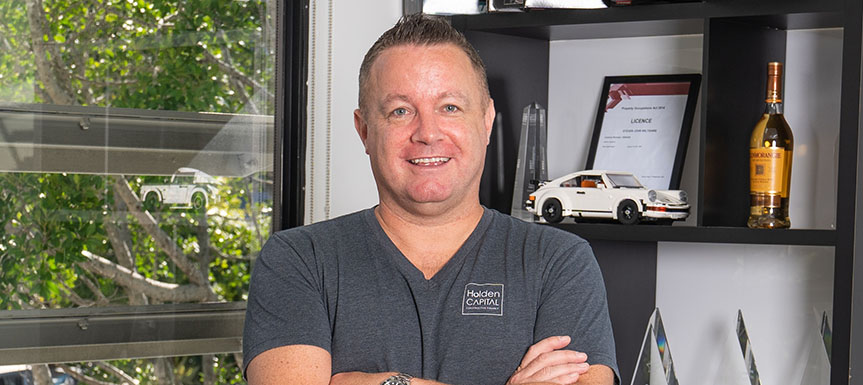
We speak with Mr Holden about the rise of construction finance, the impetus to establish a lending arm, and advice for those curious about entering the field.
Over 10 years ago, Dan Holden made a decision to pivot away from construction and property development and focus on those behind the scenes. In 2011, he established HoldenCAPITAL, Brisbane-based firm focused on construction finance.
In the years since, the decision has shown itself to be wise, with the firm's principal expanding from his Queensland base to establish offices in Melbourne and Sydney, as well as marking a presence across the world. More distinctively however, the time has seen Mr Holden integrate HoldenCAPITAL with its own lending arm.
This content is available exclusively to
The Adviser premium members.
We speak with Mr Holden about the rise of construction finance, the impetus to establish a lending arm, and advice for those curious about entering the field.
The Adviser: What made you decide to enter construction finance?
Dan Holden: I came from a construction and property development background. For about eight years, I was a develop manager on medium-sized residential projects. I found that finance was such a critical part to get the project up and running, and so I migrated across to work for a hedge fund-style investor in property development projects. Then, 10 years ago, I set up my own brokerage firm.
Has construction finance changed over this past decade?
It's definitely been a big shift and more acceptance by both bank and borrower. I remember reading mid-teens percentage through a broker, up to 59 to 60 per cent through a bank for home loan-type products. We've seen a similar trajectory in construction finance. I think the numbers back then were 6 per cent or 7 per cent through a broker, and I think it's now maybe closer to 20 percent of loans.
We've also seen a lot of the banks opening up to brokers and closing down some of their workforce, because they're getting more brokerage-introduced transactions. That means they've got less people internally to actually do all of the initial, heavy lifting of preparing a deal.
What’s behind that drive?
I'd say a bigger world of non-bank lenders. Post-global financial crisis, there were probably a dozen to 20 that we had on our list. We've now got over 160 commercial lenders that provide $2 to $100 million loans outside of the bank. That space has grown significantly, but it's also somewhat opaque. There's no real yellow pages of who non-bank lenders are, so the brokers generally have those relationships and know which ones suit as well.
How has COVID-19 impacted construction finance?
It had a massive impact initially, in a sense that quite a few of the lenders had their capital complete standstill. Other private lenders who might have had high net worth investors behind them, family offices – everyone got nervous. We were pretty lucky with our lending arm, that we were still able to find capital from our investors. And we settled every single transaction we took on during the COVID-19 full closure period.
You established a lending arm about four years ago. What made you decide to create that?
We'd had three main approaches from large institutional capital asking if we could lend their money out on their behalf, which we didn't quite want to do – in a sense of just being a front door to one particular investor or group.
What was your process in building up this part of your business?
So we eventually started just fairly small – doing $2 million site or residual stock loans. We eventually built it. Crawl, walk, run. I’d say we're now very much up and running in that lending space. In the December 2021 quarter, we did about $45 million. So, in terms of the lending side, it's definitely on a nice growth, but that's probably because we also started small. We're proud that we've never had a cent of capital loss. It's easy to write cheques, it's hard to get them back.
What kind of loans are you writing?
It's very much around construction, which can be $2 million to $50 million. But we are also getting involved in transactions where it's settling the site, as well as further advances on the construction facility to get the project complete. Generally speaking, I'd say 80 to 90 per cent of what we do is construction.
Who is your target audience as a lender? Is it brokers, lenders, property developers or someone else?
I'd say it’s all of those, and also anyone just in the property industry. You might be an agent, selling projects off the plan, and you're needing to understand how the pre-sales have factor and influence on the type of funding available. It might be valuers or it might be builders that want to understand the payments and why the developer would rock up without being able to pay the GST. I think it can be anyone that is touching property development in any way, or just wants to understand it better.
When you first started writing construction loans, is there anything that you wish you'd known when you first started?
Explain things clearly and concisely. There's too many that start with a waffle about how seller’s in hospital and they need to settle this week. “How much we lending?”, or, “How much do they want us to lend? – take all that away. Get to the point as quickly and simply as possible.
And then, the second one I'd say, is to understand the borrower and be able to explain to them. This is you as a broker and how you pitch the deal. It's not all about the property.
You can find out more about Dan Holden and construction finance in The Adviser’s Elite Broker podcast.
Tune in to the episode with Dan Holden, Writing the book on construction finance broking, below: